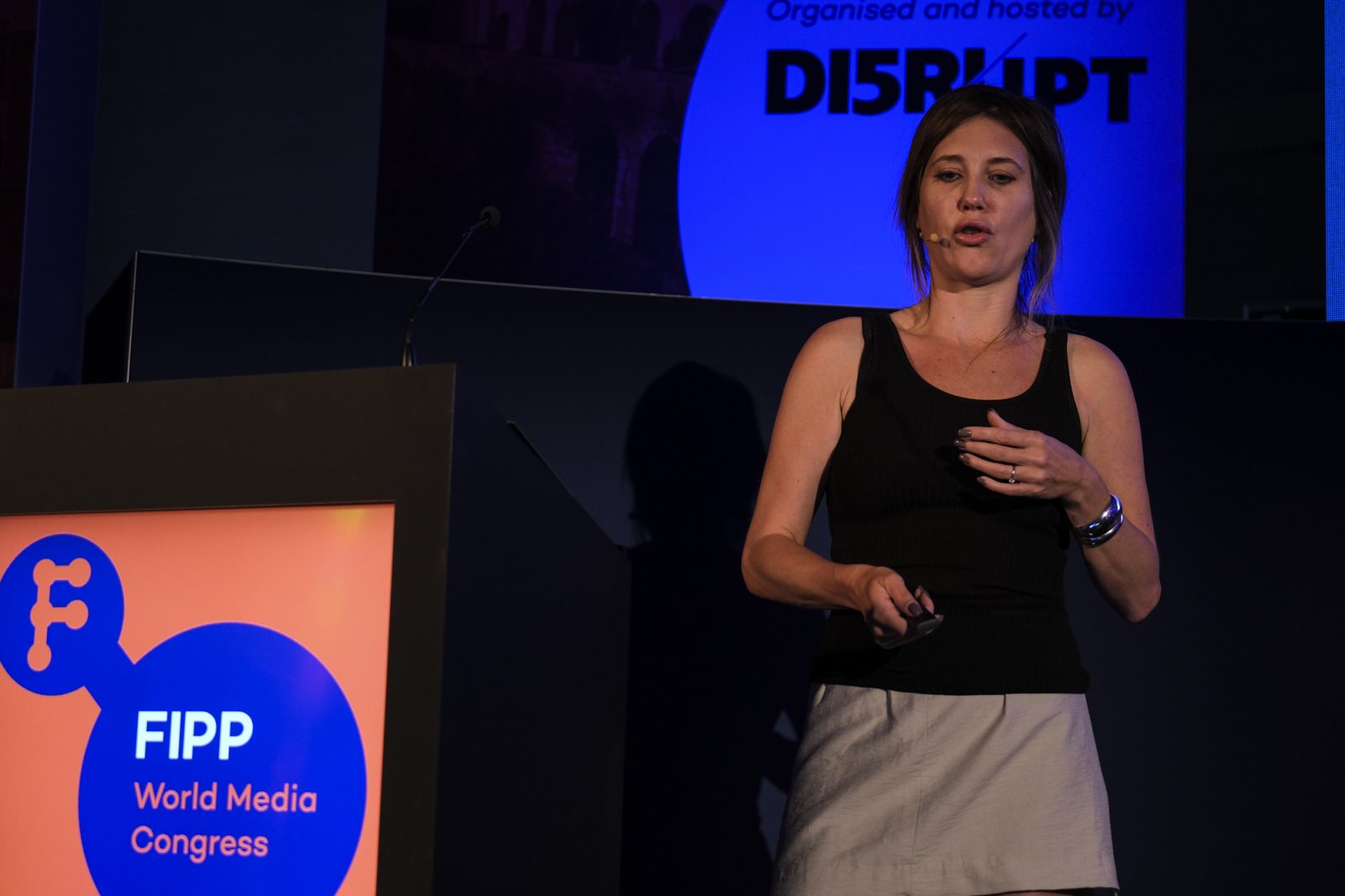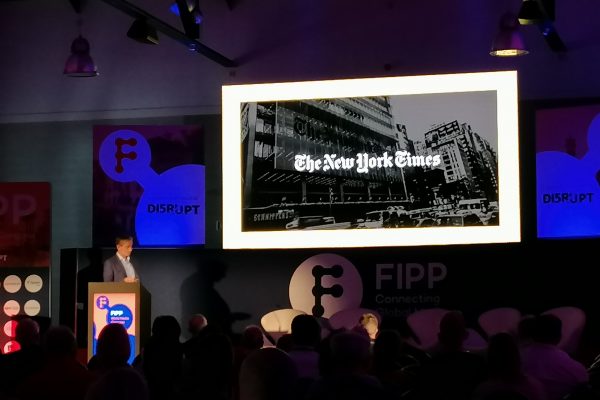Audio’s second coming: How NYTimes and Tortoise attract younger audiences through podcasts
Audio is noticeably hot on the agenda at FIPP Congress this year, more than two years after the pandemic first drove us all into our homes and in search of entertainment and information – a trend from which podcasting, already a massively growing medium, benefitted.
For Juan Señor, during a detailed presentation in which he launched this year’s edition of the Innovation in Media World Report, audio formats are self-evidently worth investing in. “The podcast boom has given birth to an audio story boom – it’s a no-brainer for media brands. This is cheap technology,” said Señor.
An audio-first membership strategy
Katie Vanneck-Smith, Co-founder and Publisher of slow news, “audio-first” media company Tortoise, talked about their pivot to an audio-to-member strategy after experimenting with different ways of engaging people.
“We now have predominantly audio output – driven by the fact that we couldn’t get cut through on social media, because we didn’t have the volume,” Vanneck-Smith told Brian Morrissey on stage. “Our under-40s audience prefer audio to newsletters, and they love the intimacy of podcasts.

“We now have a very deliberate audio-to-member strategy. The average listener of our podcasts is 28, while the average Tortoise member is 39. This tells you something about reaching these younger audiences.”
Vanneck-Smith added that what’s nice about audio is that people are spending time with it. “It’s a much more satisfying medium than digital articles, which people often don’t finish. By contrast, the [flagship Tortoise podcast] the Slow Newscast has an 88% listen-through rate.
“If 1% of our listeners convert to members, we’re happy with that. The UK [where Tortoise is based] has one of the lowest propensities to pay for news in the world, at 7% – probably because of the BBC! But podcast listeners are three times as likely to be willing to pay, at 21%. There’s an opportunity here to reach a very engaged audience.”
Reaching younger audiences through content of substance
Tom Armstrong, VP Global Advertising at the New York Times, similarly spoke about the newspaper’s deliberate strategy to attract younger listeners through audio.
“Podcasting was the ideal platform for us to start experimenting with back then,” explained Armstrong. The Daily, the Times’ flagship podcast, has been downloaded an astonishing 3.2bn times since its launch in 2017.
“We decided to take it slow and focus on just one podcast, but do it really, really well. Each episode is a 20-minute deep dive into the big story of the day.”

The New York Times is now the third biggest podcast producer in the world, having also acquired Serial productions – the original series of Serial, of course, being the wildly popular series widely credited with kickstarting the podcast renaissance around 2015. They also partner with Audm to deliver audio versions of their articles, including a “Sunday Read” which is released via the podcast feed of The Daily.
“I don’t have exact statistics, but I can tell you that the demographics on The Daily skew way younger than they do on the news app,” said Armstrong. “These are younger generations who’re really interested in topics like climate change and are hungry to understand the world through these big issues.”
At the Financial Times, it’s a similar story: Alastair Mackie, Head of Business Development, Audio & Video at the Financial Times talked about how the company has capitalised on the excitement around audio.
“We have more listeners to our podcasts than we have paying readers. The majority don’t subscribe to the FT, a significant majority are outside our home market, and they’re very young, in FT terms: the average age is 45,” he said.
Chloe Combi – who has interviewed more than 10,000 young people aged 13-24, otherwise known as Gen-Z – spoke about the way that today’s young audiences respond strongly to content they see as having substance.
“There’s this incorrect idea that young people only watch short video content,” she told the audience on day two of FIPP Congress. “Truth matters, substance matters, and longform content, especially podcasts, are very appealing to young people. Media companies should remember this.”











